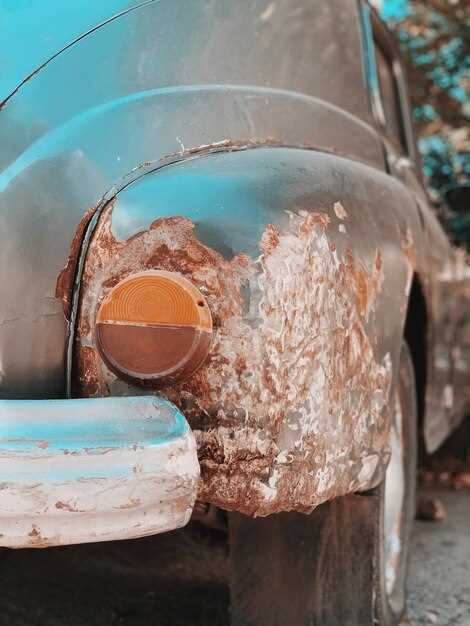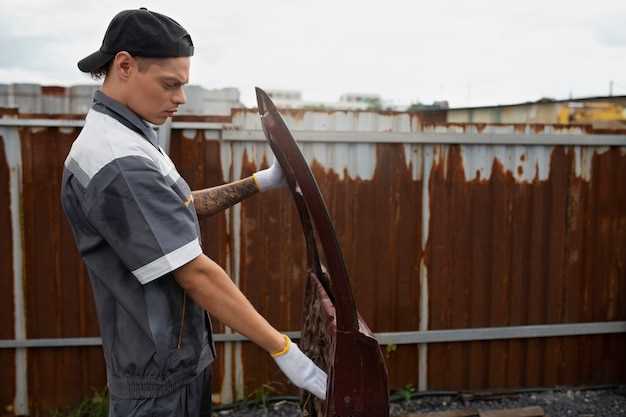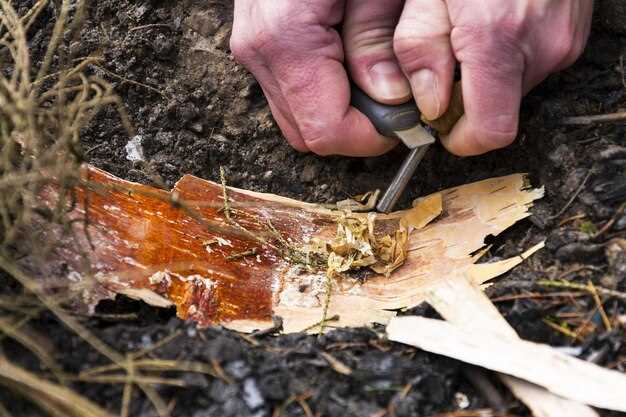
Rust can be a persistent problem for car enthusiasts, and the Volkswagen Corrado is no exception. Over time, exposure to the elements can lead to unsightly rust spots that not only detract from the vehicle’s appearance but can also cause structural damage if left untreated. Addressing these rust issues promptly is essential for maintaining the integrity and longevity of your Corrado.
Repairing rust can seem daunting, but with a few simple steps, you can effectively tackle this issue on your own. By understanding the source of the rust and utilizing the right materials, you can restore your vehicle’s body and ensure it remains in excellent condition. Whether you’re an experienced DIYer or a novice, this guide will walk you through the key steps to successfully repair rust on your Corrado.
From identifying the extent of the repair needed to choosing the correct tools and products, this article will provide you with practical advice and expert tips. By following these straightforward instructions, you can eliminate rust and extend the life of your beloved Corrado, ensuring it stays a reliable and stylish ride for years to come.
Identify Common Rust Areas on Your Corrado

When it comes to maintaining your Volkswagen Corrado, identifying common rust areas is essential for ensuring the longevity and structural integrity of your vehicle. Rust can develop in various parts of the car, often leading to more significant repair issues if not addressed promptly.
One of the most frequent locations for rust on the Corrado is the wheel arches. These areas are susceptible to moisture accumulation from road debris, leading to corrosion over time. Inspect both the inner and outer edges of the wheel arches, as rust can easily spread if left untreated.
Another common area is the undercarriage. The exposed metal components under the car can accumulate dirt and moisture, creating an ideal environment for rust formation. Make it a habit to regularly clean and inspect the undercarriage to detect any signs of rust early.
The trunk area, especially around the spare tire well and under the carpet, is also prone to rust. Water leaks from damaged seals or drainage issues can cause moisture to penetrate, leading to corrosion. Carefully check these spots, as rust can often develop unnoticed.
Additionally, pay attention to the seams and joints of the body panels. Areas where metal sections meet are critical points for rust development due to the potential for moisture to get trapped in these spaces. Regularly inspect the seams for any signs of bubbling paint or discoloration, which can indicate underlying rust.
Finally, don’t overlook the sunroof and windshield areas. Seal failures or drainage problems can cause water to leak into the surrounding metal, creating rust spots. Ensure these seals are in good condition and check for rust during your routine maintenance.
By actively monitoring these common rust areas on your Corrado, you can take early action to repair any issues and prevent minor rust from becoming a significant problem.
Gather Necessary Tools for Rust Repair

When tackling rust issues on your Corrado, having the right tools is essential for efficient and effective bodywork. The following list outlines the necessary tools you’ll need to successfully repair rust damage.
- Safety Gear:
- Protective gloves
- Safety goggles
- Dust mask or respirator
- Surface Preparation Tools:
- Wire brush or wire wheel
- Sanding block and sandpaper (varied grits)
- Angle grinder
- Rust Treatment Supplies:
- Rust converter
- Rust-inhibiting primer
- Bodywork Tools:
- Dent puller
- Body filler and applicator
- Putty knife
- Painting Equipment:
- Paint spray gun or aerosol cans
- Automotive paint (matching color)
- Clear coat
- Miscellaneous Items:
- Cleaning cloths
- Masking tape
- Drop cloths
Gathering these tools in advance will streamline the rust repair process, ensuring that you are fully equipped to handle any rust damage on your Corrado’s bodywork.
Step-by-Step Guide to Remove Rusted Areas
Removing rusted areas from your Corrado’s bodywork is essential to maintain its appearance and structural integrity. Follow this step-by-step guide to effectively tackle rust issues.
Before you begin, gather essential tools:
| Tools | Description |
|---|---|
| Sandpaper or Rust Grinder | To remove rust from the bodywork |
| Rust Converter | To neutralize remaining rust |
| Body Filler | To fill in any holes or imperfections |
| Paint and Primer | To protect the repaired area |
| Protective Gear | Goggles and gloves for safety |
Follow these steps to remove rust:
Step 1: Inspect the Area
Thoroughly examine the bodywork for rust spots. Determine the extent of the damage, noting areas that require immediate attention.
Step 2: Prepare the Workspace
Park your Corrado in a well-ventilated area, away from moisture. Lay down a protective sheet to catch debris and dust.
Step 3: Sand the Rusted Area
Using sandpaper or a rust grinder, carefully remove the rust. Start with coarse grit and gradually move to finer grit to achieve a smooth surface. Sand beyond the rusted area to ensure all rust is eliminated.
Step 4: Apply Rust Converter
Once all rust is removed, apply a rust converter to the area. This will help neutralize any remaining rust particles and prevent future corrosion. Follow the product instructions for proper application.
Step 5: Fill Imperfections
If sanding created any holes or divots, apply body filler. Smooth it out with a putty knife and let it cure according to the manufacturer’s instructions.
Step 6: Sand the Filler
Once the body filler has set, sand it down to create a smooth and even surface that blends with the surrounding bodywork.
Step 7: Prime and Paint
Apply a high-quality primer to the repaired area to protect it from moisture. Once the primer dries, paint the area with the matching color. Consider adding a clear coat for additional protection.
Step 8: Final Inspection
After the paint has dried, inspect the area for any remaining imperfections. Touch up as necessary and ensure that the repair blends seamlessly with the car’s bodywork.
By following these steps, you can effectively remove rusted areas from your Corrado, ensuring its longevity and visual appeal.
Best Practices for Rust Treatment and Prevention
Rust can be a significant issue for the Corrado’s bodywork, leading to costly repairs if not addressed promptly. Here are some effective practices to treat and prevent rust on your vehicle:
- Regular Inspection:
Conduct frequent checks of your vehicle’s bodywork, especially in areas prone to moisture retention, such as wheel wells, undercarriage, and seams.
- Cleanliness:
Keep your Corrado clean. Regularly wash off dirt, salt, and grime, particularly after exposure to winter conditions.
- Protective Coatings:
Consider applying rust inhibitors or protective wax to create a barrier against moisture. Products specifically designed for automotive use will offer the best results.
- Paint Touch-Ups:
Address any scratches or chips in the paint promptly. Exposed metal is more susceptible to rust, so use touch-up paint to seal damaged areas.
- Proper Storage:
If possible, park your vehicle in a garage or covered area to shield it from the elements. If outdoor parking is necessary, consider using a breathable car cover to minimize moisture accumulation.
- Drainage Maintenance:
Ensure that drain holes and channels are clear of debris to facilitate the proper flow of water. This can prevent rust formation due to trapped moisture.
- Rust Treatment Products:
If rust is detected, use specialized rust remover products and follow up with a rust-inhibiting primer. This will stop rust from spreading and prepare the surface for painting.
By following these best practices, you can effectively treat existing rust issues and prevent them from arising in the future, ensuring your Corrado remains in excellent condition.
How to Patch and Fill Rust Holes Properly
Repairing rust holes in your Corrado’s bodywork requires attention to detail and the right materials. Start by assessing the extent of the rust damage. Use a wire brush or sandpaper to remove loose rust around the hole, making sure to expose clean metal around the edges. This will help ensure a strong bond for the filler material.
Next, clean the area with a degreaser to remove any contaminants that could interfere with adhesion. Once the surface is clean and dry, you have several options for patching the hole depending on its size and location. For small holes, a quality automotive body filler can be used effectively. Mix the filler according to the manufacturer’s instructions and apply it over the damaged area using a putty knife. Make sure to overfill slightly, as this will allow for sanding later on.
For larger holes, you may need to use a metal patch. Cut a piece of sheet metal slightly larger than the hole, and shape it to fit the contour of your vehicle’s bodywork. Adhere the patch using welds or adhesive for metal bonding, ensuring a secure fit. Once the patch is in place, apply body filler over the seams to create a smooth transition with the surrounding surface.
After the filler has dried, sand the area down with progressively finer sandpaper until it is flush with the surrounding bodywork. This step is crucial for achieving a professional finish. Once you’re satisfied with the surface, clean it again to remove any dust particles. Finally, apply primer followed by paint to match your vehicle’s color, protecting the repaired area from further rust formation.
Regular inspection and maintenance are vital. Keep an eye on treated areas to ensure that no new rust develops, and address any issues as they arise to keep your Corrado in top shape.
Final Touches: Painting and Finishing for Protection
After successfully addressing rust issues on your Corrado, the final steps are crucial for ensuring long-term durability. A proper paint job and finishing can significantly enhance the vehicle’s resilience against future rust damage.
Begin by selecting a high-quality rust-inhibiting primer. This step is essential; it creates a barrier between the metal surface and the elements, preventing moisture from causing further oxidation. Apply the primer evenly, paying special attention to previously repaired areas. Allow it to dry completely before moving on.
Next, choose a paint that matches your vehicle’s color while also offering protective properties. Consider using a paint that contains anti-corrosive agents, as this will provide additional defense against rust. Apply the paint in thin, even coats, allowing adequate drying time between applications. This technique not only enhances the finish but also ensures a robust protective layer.
Once the paint has dried, applying a clear coat can further enhance protection. A clear coat not only adds shine but also increases the paint’s durability and shields it from UV rays, which can degrade the paint over time. Ensure you follow the manufacturer’s instructions for application and drying times.
Finally, examining and touching up any areas that might show signs of wear over time will help maintain the integrity of your repair. Regular maintenance and inspections are key to keeping rust at bay and prolonging the life of your Corrado.
With these final touches implemented, your vehicle will not only look great but will also be much better protected against rust, ensuring that your repair efforts yield lasting results.











